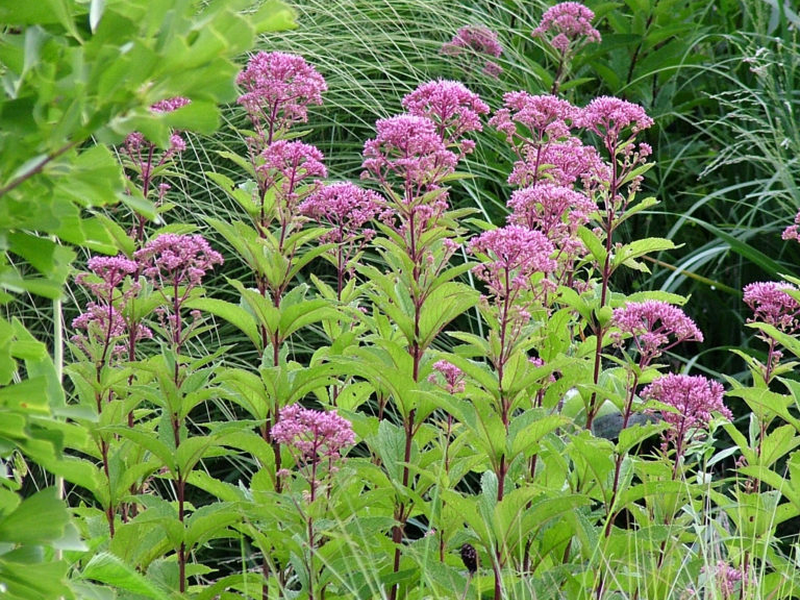Coastal Joe Pye Weed
Eutrochium dubium
Click here to download a PDF of this plant information page (for printing).

Sun Exposure: Sun, Part Sun
Season of Interest: Summer, Fall
Bloom Time: August - September
Bloom Color: Pink to Purple
Height: 24 to 36 in.
Spread: 25 in.
Spacing: 28 in.
Water Needs: Wet to Average
Maintenance: Cut back in winter
Soil Type: Clay, Loam, Sandy, Rocky
Soil pH: Acidic, Neutral, Alkaline
Soil Drainage: Well drained, Moist
Pests: None
Diseases: None
Wildlife: Bees, Butterflies, Birds

Description:
Costal Joe Pye weed is a late-blooming wildflower with tiny purple or pink flowers blooming in large clusters atop tall, thick stems. In nature, Costal Joe Pye weed is found in area with somewhat moist soil, such as near streams or in drainage ditches. It does best in full sun or partial shade, well-drained soil, and can grow in cold or warm conditions until frost hits when it will die back to the ground until the following spring. This plant is generally considered to be one of the best plants at attracting butterflies. As a copious nectar producer, Joe Pye Weed attracts all kinds of butterflies from small skippers to large Swallowtails, and even Monarchs as well as numerous native bees. For more information see:
plants.ces.ncsu.edu/plants/eutrochium-dubium
Care and Growing Tips:
This wildflower is adaptable to many different soil conditions, but it will do best in fairly rich, well-drained soil. The plant is very tolerant of clay soil and wet soils, and mature plants even have some tolerance for periods of drought. It is notable as a plant that tolerates nearly all soil pH levels. Maintaining consistent soil moisture is key during the plant’s first growing season. Even after the plant is mature, try not to let the soil remain dry for more than a week or two at a time, especially during hot weather. A layer of mulch around your plant will help to retain soil moisture and keep the roots cool. It is unlikely to need fertilizer, but if you have extremely poor soil, apply a slow-release granule fertilizer formulated for flowering plants in the spring as soon as active new growth begins and again in the midsummer when blooms begin to appear. Mixing compost into the soil around your plant in the spring is also beneficial. Once cold weather arrives in the late fall, Joe Pye weed goes dormant and dies back. You can either prune the dead foliage to about 4 to 8 inches above the ground at this time or wait until early spring to do this garden cleanup.